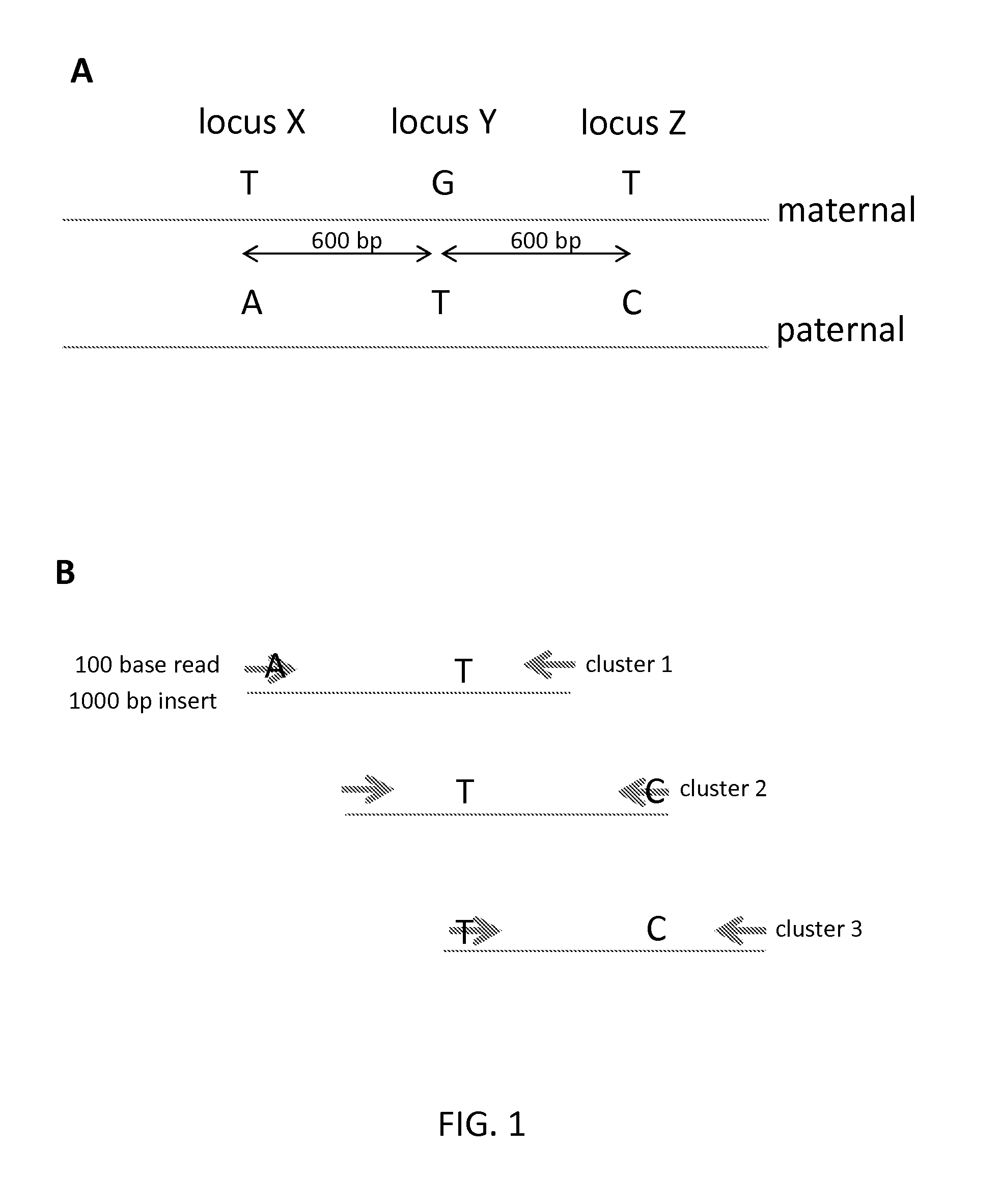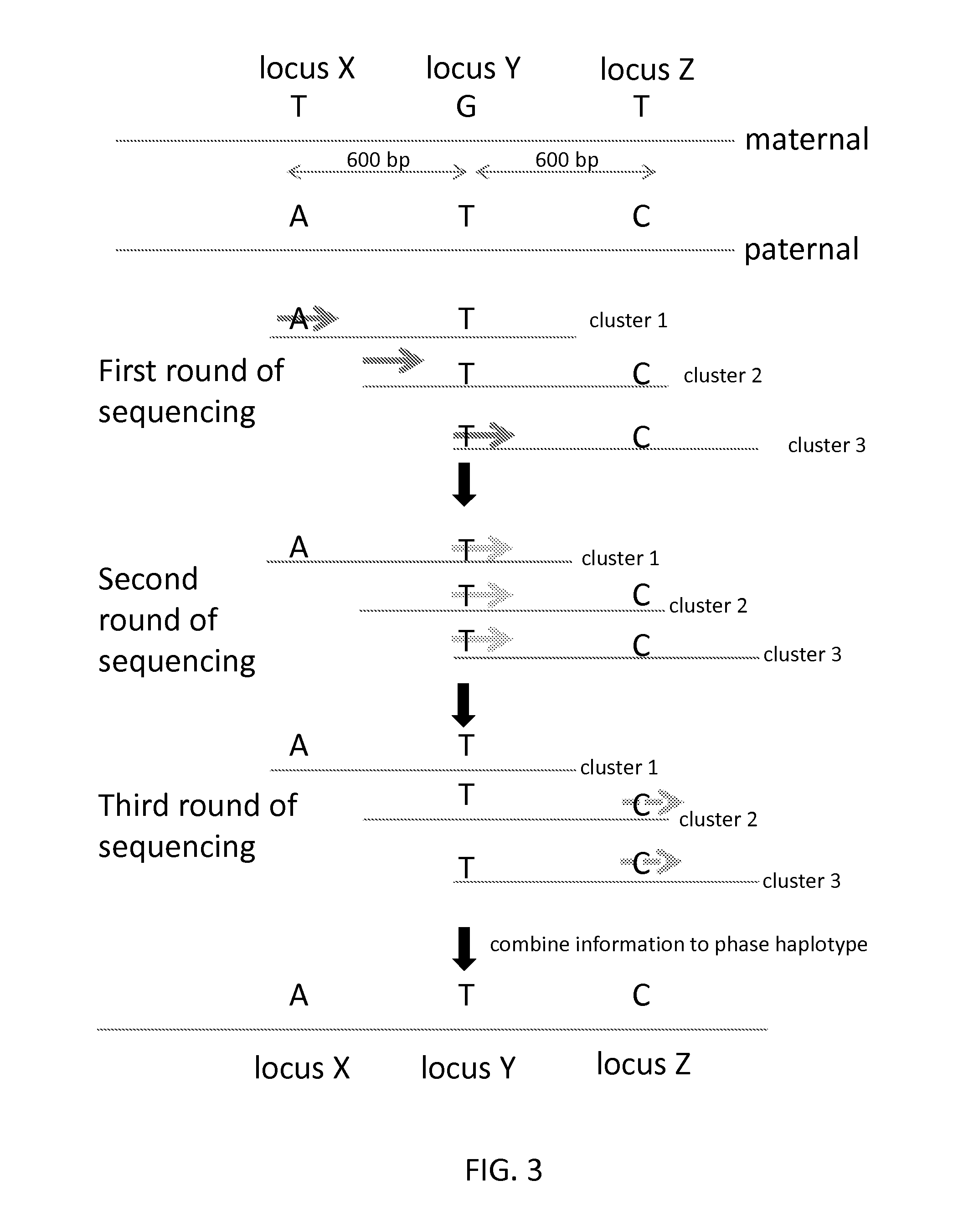Sequential sequencing
a sequencing and sequence technology, applied in the field of sequence sequencing, can solve the problems of negative phenotype, inability to provide phasing and/or haplotype information e, and associated limitations, and achieve the effect of reducing complexity
- Summary
- Abstract
- Description
- Claims
- Application Information
AI Technical Summary
Benefits of technology
Problems solved by technology
Method used
Image
Examples
example 1
Characterization of the Human Oral Microbiome by Sequential Sequencing of Bacterial 16S Ribosomal Operon
[0118]This example describes the characterization of the human oral microbiome by sequencing of the 16S rRNA gene sequences of a number of related bacterial organisms. 16S rRNA gene sequences contain species-specific hypervariable regions that can provide means for bacterial identification. An exemplary embodiment of 16S rRNA sequential sequencing, described below, is depicted in FIG. 6.
Sample Nucleic Acid
[0119]Microbial genomic DNA is isolated from human saliva using the OMNIgene-DISCOVER sample collection kit (DNA Genotek) according to the manufacturer's instructions. The different line shadings and hash marks indicate different microbial genomes (microbial DNA). The relative numbers (e.g., 4 hatched lines vs 1 gray line) reflect the different ratios of the organisms in the saliva sample. Extracted DNA is then fragmented via sonication to an average length of 1000 bp and purifie...
example 2
Genomic DNA Sequencing—Distinguishing Between a Gene and its Pseudogene Using Sequential Sequencing
[0122]FIG. 7 depicts an exemplary application of a method described herein to distinguish a gene from a pseudogene in a gene / pseudogene pair. Genomic DNA sequencing libraries are prepared using the NuGEN's Encore system. These libraries are sequenced on a DNA sequencing system such as those made by Illumina or Ion Torrent. Clusters include, but are not limited to cluster 1, from a different genomic region from a gene / pseudogene pair, cluster 2, which comprises a portion of the gene of a gene / psuedogene pair, and cluster 3, which comprises a portion of the pseudogene of the gene / pseudogene pair. A first round of sequencing is performed using a first sequencing primer, thereby generating a first sequencing read. In some cases, the first sequencing primer is a standard forward primer as described in Example 1. The first sequencing read reveals that clusters 2 and 3 exhibit different allel...
example 3
Targeted DNA Sequencing Library
[0123]A targeted DNA sequencing library is made using a target-selective library preparation kit from NuGEN, Agilent, Illumina, or Nimblegen, described herein. These libraries are sequenced on a DNA sequencing system such as those made by Illumina or Ion Torrent. Following a first sequencing read, the DNA is denatured to wash away the extension strand. A pool of primers that hybridize to common sequences in gene / pseudogene pairs are injected into the sequencer to act as a priming site for a second sequencing read. A primer set may include primers that will sequence through one of the nucleotide differences between a gene and its pseudogene (e.g., SMN1 and SMN2) as well as primers that will generate sequence to read nucleotide differences, and therefore determine whether a sequencing read is, for example, from a gene or pseudogene. A combination of such primers will allow multiple gene / pseudogene pairs across the genome to be analyzed simultaneously for...
PUM
| Property | Measurement | Unit |
|---|---|---|
| nucleic acid | aaaaa | aaaaa |
| length | aaaaa | aaaaa |
| size | aaaaa | aaaaa |
Abstract
Description
Claims
Application Information
 Login to View More
Login to View More - R&D
- Intellectual Property
- Life Sciences
- Materials
- Tech Scout
- Unparalleled Data Quality
- Higher Quality Content
- 60% Fewer Hallucinations
Browse by: Latest US Patents, China's latest patents, Technical Efficacy Thesaurus, Application Domain, Technology Topic, Popular Technical Reports.
© 2025 PatSnap. All rights reserved.Legal|Privacy policy|Modern Slavery Act Transparency Statement|Sitemap|About US| Contact US: help@patsnap.com



